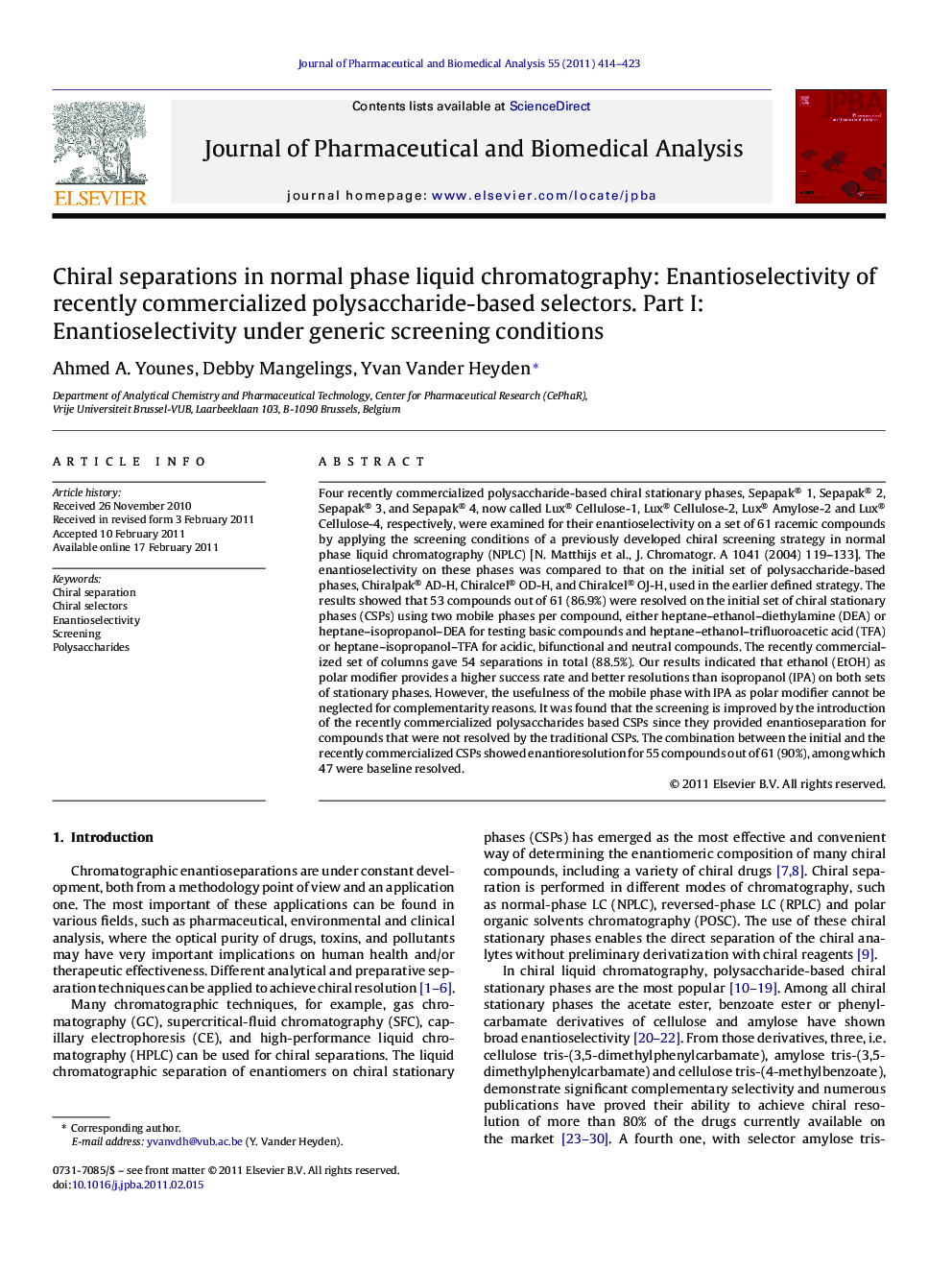| کد مقاله | کد نشریه | سال انتشار | مقاله انگلیسی | نسخه تمام متن |
|---|---|---|---|---|
| 1222934 | 967875 | 2011 | 10 صفحه PDF | دانلود رایگان |

Four recently commercialized polysaccharide-based chiral stationary phases, Sepapak® 1, Sepapak® 2, Sepapak® 3, and Sepapak® 4, now called Lux® Cellulose-1, Lux® Cellulose-2, Lux® Amylose-2 and Lux® Cellulose-4, respectively, were examined for their enantioselectivity on a set of 61 racemic compounds by applying the screening conditions of a previously developed chiral screening strategy in normal phase liquid chromatography (NPLC) [N. Matthijs et al., J. Chromatogr. A 1041 (2004) 119–133]. The enantioselectivity on these phases was compared to that on the initial set of polysaccharide-based phases, Chiralpak® AD-H, Chiralcel® OD-H, and Chiralcel® OJ-H, used in the earlier defined strategy. The results showed that 53 compounds out of 61 (86.9%) were resolved on the initial set of chiral stationary phases (CSPs) using two mobile phases per compound, either heptane–ethanol–diethylamine (DEA) or heptane–isopropanol–DEA for testing basic compounds and heptane–ethanol–trifluoroacetic acid (TFA) or heptane–isopropanol–TFA for acidic, bifunctional and neutral compounds. The recently commercialized set of columns gave 54 separations in total (88.5%). Our results indicated that ethanol (EtOH) as polar modifier provides a higher success rate and better resolutions than isopropanol (IPA) on both sets of stationary phases. However, the usefulness of the mobile phase with IPA as polar modifier cannot be neglected for complementarity reasons. It was found that the screening is improved by the introduction of the recently commercialized polysaccharides based CSPs since they provided enantioseparation for compounds that were not resolved by the traditional CSPs. The combination between the initial and the recently commercialized CSPs showed enantioresolution for 55 compounds out of 61 (90%), among which 47 were baseline resolved.
Journal: Journal of Pharmaceutical and Biomedical Analysis - Volume 55, Issue 3, 1 June 2011, Pages 414–423